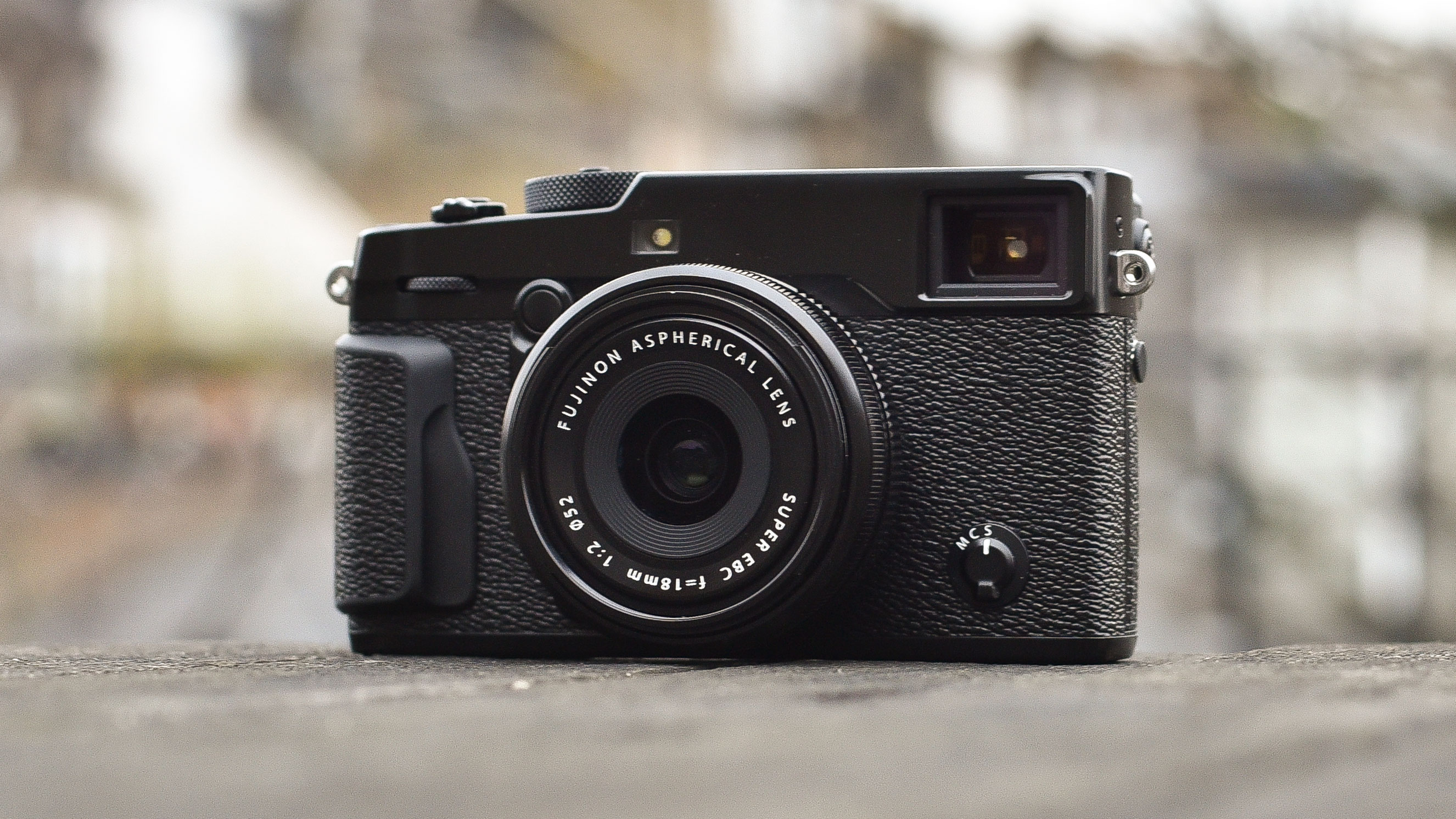TechRadar Verdict
The new sensor gives the X-Pro2 a boost in picture quality, the new EVF and autofocus are useful improvements and minor changes to the controls and layout do make a dfference. The X-Pro2 still has some foibles, but it's a great camera and a good step forward from the popular X-Pro1.
Pros
- +
Improved viewfinder
- +
Very good detail and colour
- +
Much better AF than before
Cons
- -
ISO dial can be awkward
- -
EV dial easily knocked
- -
Fixed rear display
Why you can trust TechRadar
Few mirrorless cameras develop as strong a fanbase as Fuji's X-Pro1, and even fewer manage to appeal to as wide a demographic as it eventually did. With its classic styling and manual controls, it immediately attracted seasoned photographers who may have started out with similarly styled rangefinders, while its fine image quality and a steady line of well-regarded optics slowly released alongside meant that it fast became the camera everyone else wanted to own too.
True, as the first interchangeable-lens model in the X-series it arrived with a handful of quirks and idiosyncrasies that weren't to everyone's taste. Its focusing system, for example, wasn't particularly adept at capturing moving subjects, while the unique X-Trans sensor technology proved problematic when it came to video quality. Firmware updates were issued to address some of these concerns, but four years is a long time in camera technology and the appetite for a refresh was very obvious.
And here it is, the X-Pro. It retains its predecessor's winning formula while rejuvenating the core feature set. With a new sensor and processor on board, together with a fresh focusing system and an updated hybrid viewfinder, it appears as both a significant upgrade and potentially a camera to win over those unconvinced by the X-Pro1.
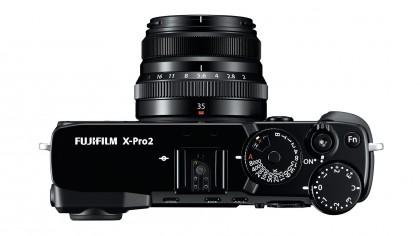
Key features
Fuji has given the X-Pro2 joint flagship status alongside the more DSLR-like X-T1, and has aimed it towards the enthusiast/professional end of the market. It's likely to be considered alongside the similarly priced Sony A7 II, as well as the Panasonic Lumix GX8 and Olympus's well-received OM-D E-M5 II – and indeed, potentially the X-T1 too.
Up until the X-Pro2, all of Fuji's interchangeable-lens X-series models employed some form of 16MP APS-C sensor, but the X-Pro2 breaks tradition by offering a new 24.3MP alternative. This is perhaps the most common pixel count across budget, enthusiasts and professional cameras alike, and this compares well against its direct rivals.
Now on the third generation of Fuji's X-Trans CMOS technology, the sensor has once again been designed with a more random colour filter array than conventional Bayer GRBG sensors. Despite being more densely populated than the X-Pro1's sensor, Fuji has broadened the camera's sensitivity range from the same base of ISO 200 up to a maximum ISO 12,800 – one stop higher than the previous ISO 6400 limit. As is fairly standard on such a model, you can use extension settings that broaden this range, stretching to ISO 100 and 51,200-equivalent settings at lower and higher ends respectively. Sadly, the ISO 100 setting is JPEG only, but the upper values can be used when shooting raw files.
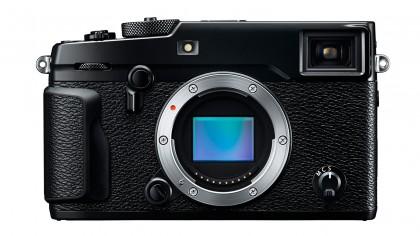
Fuji attributes many of the camera's performance and image quality changes to its brand new X Processor Pro processing engine. This delivers start-up time of 0.4 seconds, as well as shutter lag of just 0.05 seconds, and also now allows for a losslessly compressed raw mode. It's also responsible for the camera's 8fps burst rate, with a burst depth of 27 uncompressed raw frames, 33 compressed raw frames and 83 JPEGs.
Sign up for breaking news, reviews, opinion, top tech deals, and more.
Fuji's Film Simulation options have long included options to mimic the company's Velvia, Provia and Astia emulsions, but they now include a new black-and-white Acros mode. This is said to offer deep blacks and smooth tones, and presents an alternative to the standard Monochrome option, while a new Grain effect mode lets you treat images with two different levels of grain for a look Fuji claims is reminiscent of images captured on film. Advanced Filters, such as Toy Camera, Dynamic Tone and Pop Color, are also provided.
Post capture, the user can take advantage of in-camera raw processing, with control over core parameters such as exposure, noise reduction, white balance and so on, together with the option to change the Film Simulation mode and either apply or remove the Lens Modulation Optimiser among other things. The LMO is there to offset the softening effect of diffraction at small lens apertures.
The X-Pro1's Hybrid Multi Viewfinder was a much-loved feature, and something which separated the model from more conventional systems, and this has also been subject to a raft of improvements. Now dubbed an Advanced Hybrid Multi viewfinder, it maintains both the optical and electronic displays of the X-Pro1, but is augmented by the Electronic Rangefinder feature that first appeared in the X100T compact. This overlays a small version of the electronic finder in the corner of the optical one, which gives the user a better idea of exposure and white balance when not using the electronic finder.
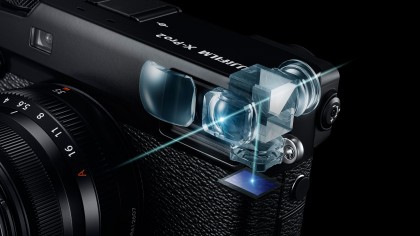
The electronic component of the viewfinder has seen the resolution of its display jump from 1.44 million dots on the X-Pro1 to 2.36 million, while its display rate has similarly been increased to a maximum 85fps in its High Performance power setting (two further settings are also available, which increase battery life though at the cost of performance). It's also now an OLED device.
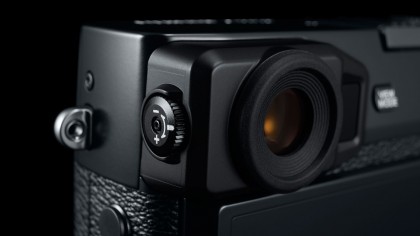
The viewfinder gains internal dioptric correction – a feature omitted from the X-Pro1 and only possible through external optical accessories – and has had its eye point shifted from the previous 14mm to 16mm for better visibility. When using the optical finder, which takes its view head on like a rangefinder rather than through the lens like on a DSLR, the camera can apply framing guidelines to show what the camera will capture, and with the new Bright Frame Simulation option, it's possible to see what angle of view would be be captured at other focal lengths before a lens of the focal length is used.
In contrast to many rival models, the camera's 3in LCD screen cannot be pulled away from the camera in any way, nor is it sensitive to touch. It does, however, resolve details with 1.62 million dots, which is the highest resolution of any X-series camera to date.
